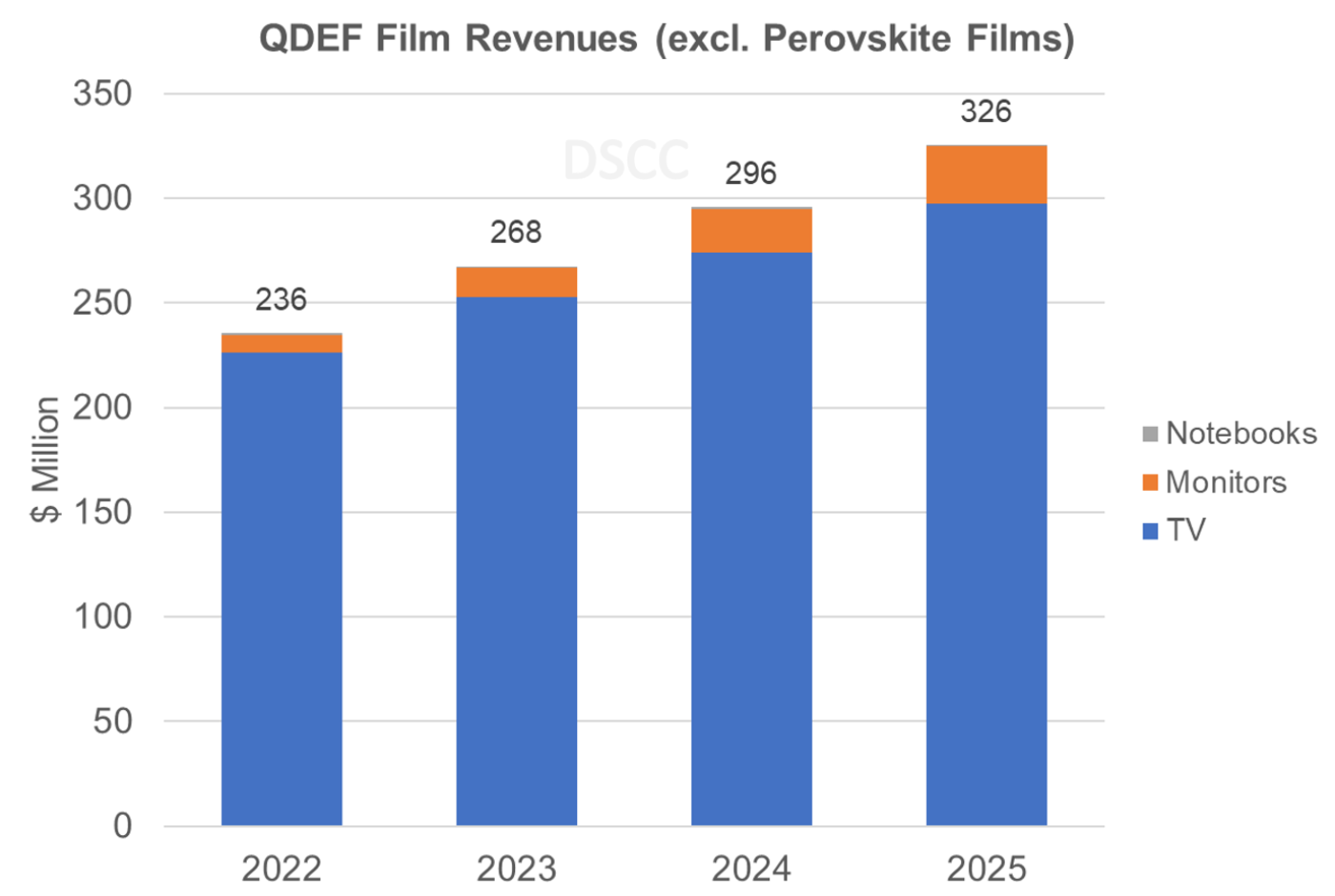Quantum Dot Displays Start to Diversify Again
Quantum Dot Displays Start to Diversify Again
DSCC has just released its latest Quantum Dot Display Technology and Market Outlook Report 2022 (一部実データ付きサンプルをお送りします). According to the report, the mature QDEF technology will continue to grow in 2022 while new configurations appear, marking a diversification in technologies and materials.
Quantum dots (QDs) have been used for nearly a decade to enhance colors in LCD panels. In the early days, OEMs had the choice between two types of configurations: a glass tube designed for edge-lit backlights or an optical film that could fit inside most LCD panels. The latter became known in the industry as QDEF, which stands for Quantum Dot Enhancement Film. Sony and TCL initially went for the glass tube for their premium TVs while Amazon adopted QDEF in its most expensive tablet, the Kindle HDX.
In 2015, Samsung Electronics made a big push for QDEF in its premium TVs to counter rival LG’s OLED TVs. In the following years, QDEF became the standard for quantum dot displays and the supply chain focused on cutting the high cost of the film. Despite the continuously falling prices, DSCC expects total film revenues for QDEF to keep growing and surpass $300M within the next four years.
One of the drivers for growth in QDEF revenues is MiniLED. A MiniLED backlight can dramatically increase the contrast of LCD panels but does not improve color gamut. Therefore, brands choose to combine MiniLED with QDEF to obtain the best possible contrast and colors. DSCC forecasts shipments of MiniLED LCD TVs with QDEF to grow from 6.2M units in 2022 to over 14M units in 2026.
The most important new development in the QD industry is the launch of the first QD-OLED TVs and monitors by Sony and Dell at CES. These panels are manufactured by Samsung Display so will also end up in Samsung’s TV lineup later. The technology is based on a Quantum Dot Color Conversion (QDCC) layer that is inkjet-printed on top of an OLED panel. Unlike LG’s own OLED technology, there is no white sub-pixel, so the colors do not get washed out, even at high brightness.
The same QDCC technology also have the potential to be used with MicroLED displays. Nanosys, a leading developer of QD technologies, acquired glō, a MicroLED startup, last year. Applied Materials is also actively developing a MicroLED architecture based on QDs.
Diversification is also happening at the material level: perovskite is an emerging class of material that can provide higher efficiency and a wider color gamut than other QD materials. The first products with perovskite films could begin to ship in 2022.
A long-term goal for the QD suppliers is to eventually enable the commercialization of Electroluminescent Quantum Dots (EL-QD). This architecture uses the QDs as the light emitters instead of color converters. Although several prototypes have been demonstrated, there is no indication that this type of display will be mass produced in the near future.
The new Quantum Dot Display Technology and Market Outlook Report 2022 (一部実データ付きサンプルをお送りします) includes detailed market forecasts to 2026, as well as an analysis on the following topics:
- Different types of QDs that are useful for display applications;
- The European Union's Regulatory of Hazardous Substances (RoHS) imperative and implication in each type of QD architecture;
- Cost breakdown of QDEF and revenues forecasts for films and quantum dot materials;
- Advantages and challenges of manufacturing QDCC by photolithography and inkjet printing;
- Benefits and market share of perovskites;
- QD-OLED fab capacity and display structure;
- Future applications of QDCC in MicroLED and QNED displays;
- Current status of EL-QD (demos, EQE and lifetime);
- Supplier Profiles: Profiles of companies encompass QD IP and material suppliers, perovskite suppliers and QD film suppliers.
